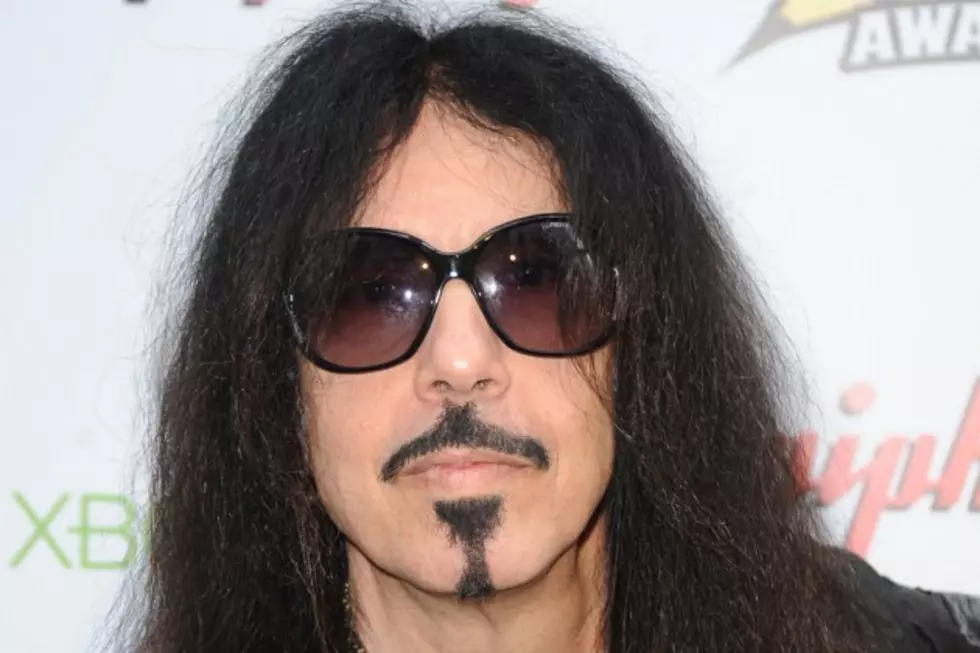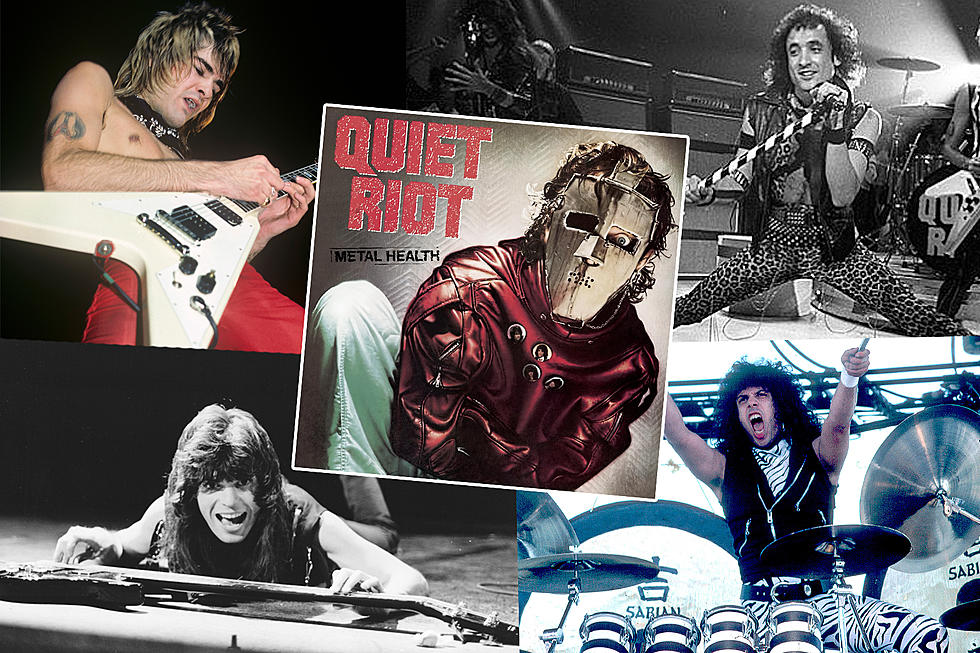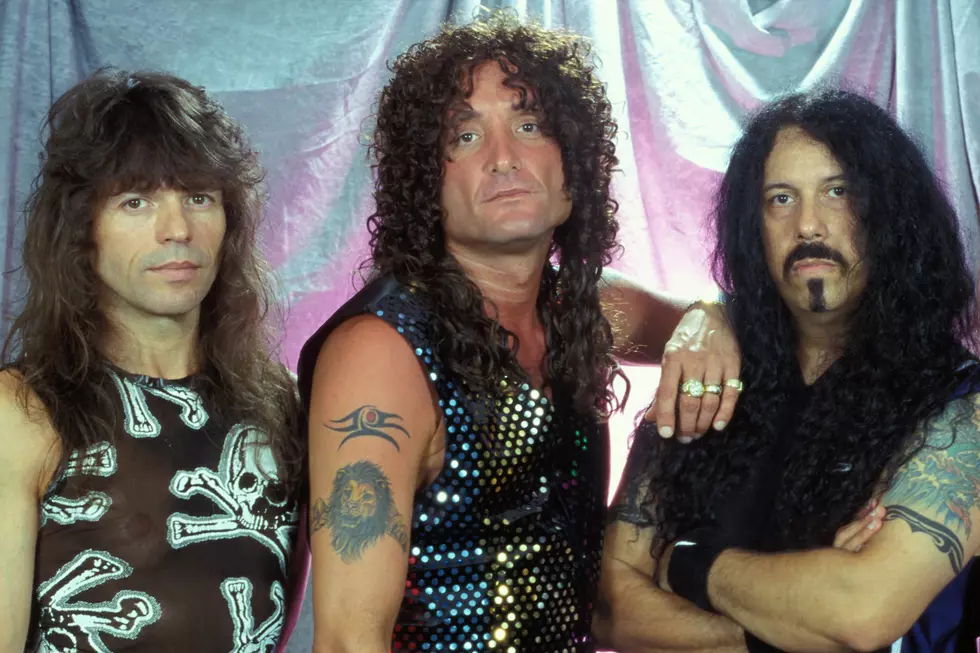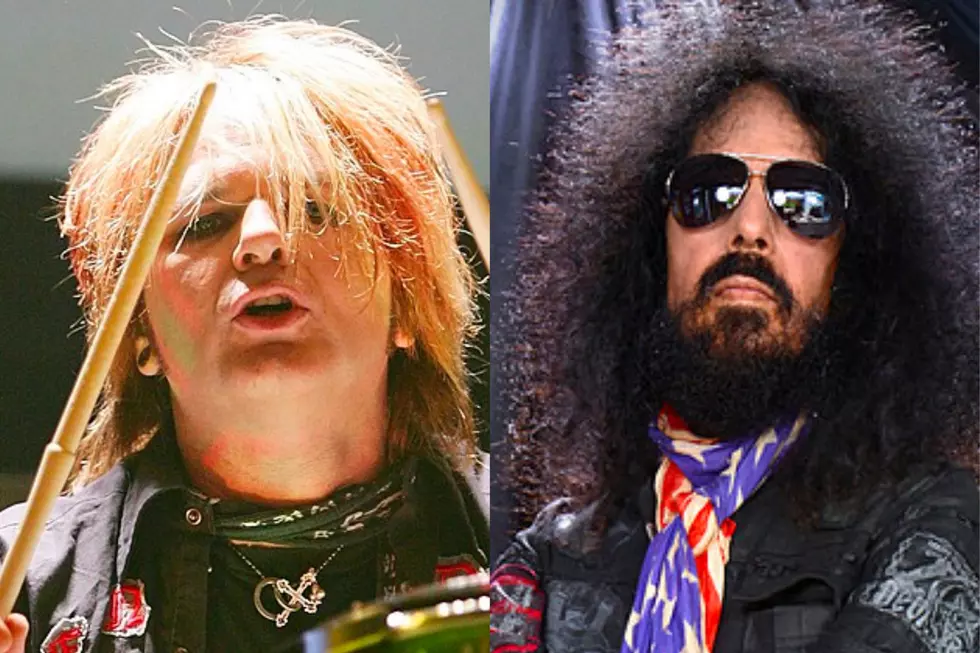
Quiet Riot’s Frankie Banali on ‘Metal Health”s Success and More: Exclusive Interview
The new documentary Quiet Riot: Well Now You’re Here, There’s No Way Back tracks the spectacular rise and fall and eventual rebirth of the ‘80s hard rock group that blazed an important trail for hard rock and heavy metal when their Metal Health album hit the top of the Billboard album chart in 1983.
Drummer Frankie Banali found himself at a crossroads when singer Kevin Dubrow, his longtime collaborator, died in November 2007. In a statement released on his website in early 2008, he said that Quiet Riot would not continue. But in late 2010, he announced that he was putting together a new version of the band. Well Now You’re Here, There’s No Way Back goes behind the scenes as Banali works to rebuild the group.
The film, which was directed by Regina Russell, is now available on DVD, iTunes and digital streaming after a series of well-received festival screenings.
We recently spent a few minutes with Banali to talk about the film and what Quiet Riot fans can look forward to in the coming months.
One of the first things that we see in the movie is the statistic that in 1983, Quiet Riot became the first heavy metal band to have a No. 1 album on the Billboard chart. At the time, how much did you guys grasp what a big deal that was?
Well you know, people forget the fact that the band did that and we were No. 1 and we toppled Michael Jackson and the Police. At the time when it was happening, you have to understand that we were out on the road, primarily as a support act for a lot of major bands, so we were just too immersed in the daily rigors of touring. But at the same time, we were incredibly thrilled, because you know, every kid who wanted to be a musician, that was the dream, to actually make a record and go out on the road and tour. But to make a record and have it reach No. 1, it was phenomenal. Playing the US Festival at 11:30 in the morning in front of over 375,000 people, I mean, how can you not be thrilled?
The success of the Metal Health album ends up being a cool story because it wasn’t an immediate thing. There was a lot of hard work that led up to that eventual number one record. How hard was it to stay focused on building the band and not worry about where it was all headed?
I always try to tell people and you can see this in the film that Quiet Riot was all about the music primarily, but it was also comedy and having fun. So we went out there and did the shows and we loved it and it was great and it was the entire focus of the day, but there was also a lot of comedy and there was also a lot of friction at different times. All of it is captured in the film from beginning to end.
As you mentioned, you guys were the first band on that day at the US Festival. What do you recall about was going on behind the scenes? There’s a lot of stories, like the Clash being unhappy that Van Halen were getting paid more. It seems like there was a competitive vibe that was in the air and I wondered what you saw from behind the scenes.
The interesting thing about it is the fact that we went on first, and usually the first band on the rest of the bands kind of ignore. You know, they figure if you’re going on first, you can’t be worth that much. So I think the rest of the competition, so to speak, sort of ignored us until we got up onstage. We just killed it on that stage that morning. I think for everybody else, it was a misstep, because people had been there all night and whoever played first, if you did it right, you know, you really were going to be welcomed and it was going to be accepted and that’s exactly what happened. What I did notice was that as the set continued, I saw more people from other bands on the side of the stage watching us in almost disbelief that this was actually going on. It was a great moment for us. We knew Van Halen were going to be on late and we never even saw them, because we had to turn right back around and go back out on the road, because we were actively touring at the time. We had to fly in from El Paso to do the US Festival, but after the [show], we had to go right back out, I think to Pennsylvania, to continue touring.
The chemistry that you and Kevin had within Quiet Riot, a lot of times, maybe it’s the singer and the guitar player. You don’t always see a combo where it’s the singer and the drummer. How early did you see that chemistry developing?
That happened right from the get-go. If you watch the movie, there’s actually a clip in the film where I’m playing with another band and Kevin’s out in the audience. He came down to see me with a friend of his that was in the music business. That night was the first time we talked about doing it. But the reason that the nucleus of the band was always Kevin and I was because we shared the same tastes in music and the bands that we loved were mostly English bands from the ‘60s and ‘70s. He and I spoke a language that only he and I could understand. That’s the reason it was that way and we were the ones that were in the band for the greatest majority of the history of the band until Kevin passed away. It’s all documented there in the film. We’re very fortunate to have so much archival footage that shows really, the relationship between Kevin and myself.
It was cool seeing that footage that comes after Dana Strum is talking about seeing the band in the ‘70s, just what an epic stage show the band already had there in the late ‘70s.
Oh yeah, Quiet Riot was a force to reckon with when Randy [Rhoads] was in the band. But it became even bigger than that once Randy had gone off to play with Ozzy [Osbourne] and subsequently died. Quiet Riot took a completely different meaning and perspective and reached a level that that first version of the band never did.
What do you think it was that Spencer Proffer heard in your sound that others hadn’t? Because he ends up being an important part of the whole picture as the producer for Metal Health.
He came to see us live, and I think when he saw us live, he saw that there was something different and there was a power in the band and in particular, Kevin and what I brought to the table. Because he actually hired me to play on a number of sessions, even before I recorded the Metal Health record. So he saw the potential that was there and the chemistry that was there with Kevin and I. He got it early on and we were very fortunate to have gone into the studio with him.
Those singer auditions leading up to Mark Huff joining the band looked like they were brutal.
[Laughs]
I wondered if it was comparable to when you had to replace Kevin back in the day with Paul Shortino? Did you go through a similar process?
No, that was a different situation altogether, because we owed CBS another record, and we had to do a record and we just had to get somebody to come in and do the record. It was a conscious decision not to try to bring somebody into the band that sounded like Kevin. We went in a completely different direction and although it was a great record, it just didn’t work and the timing of it was bad anyways. I’m very proud of the record, and I think it’s a wonderful record, but it was what it was.
There are an interesting slate of folks that pay tribute to the members of Quiet Riot throughout this film. What’s your connection with Miles Davis’ kids? When did you first find out that they were big fans of your drumming?
I had the opportunity to meet Erin, Miles’ son, and Vince Wilburn Jr., who played drums with Miles. Vince is a real music guy. He’s one of those guys that loves all kinds of music. He loves rock 'n' roll as much as he loves hip-hop and everything in between. I’m a huge Miles Davis fan, and to find out that Miles’ family knew about Quiet Riot, that Miles knew about Quiet Riot, to me, that was an incredible thing. It also shows you in the film that Quiet Riot transcended [far beyond] heavy metal and rock 'n' roll. It filtered into so many different peoples’ lives.
You’ve done a good amount of session work outside of the band, as you mentioned. What are your memories of doing the session with Billy Idol for “Mony Mony.”
That was interesting. I got called in to do it by the producer, Keith Forsey. I met Billy and we went over to the Rainbow and had a drink and we discussed music and things like that. Then we went into the studio the next day and it took 45 minutes to get the drum sound and half an hour to cut the track. I was hired just to do the one song and they asked me if I could record more, but I had another session that same night, so I did another song for Billy and then went off. It was a great experience, but it was a session.
You put out a new Quiet Riot album recently. What else is on tap for the band looking ahead?
We continue to tour. My real focus right now is that I would really like people to go to iTunes, because they can order the documentary now. And also, if they go to QuietRiotMovie.com, they can order the DVD there and actually see the film there as well. My main focus is the Quiet Riot movie and the continuation of Quiet Riot live.
Quiet Riot Live in New York City
This Day in Rock History: October 7
More From Ultimate Classic Rock









